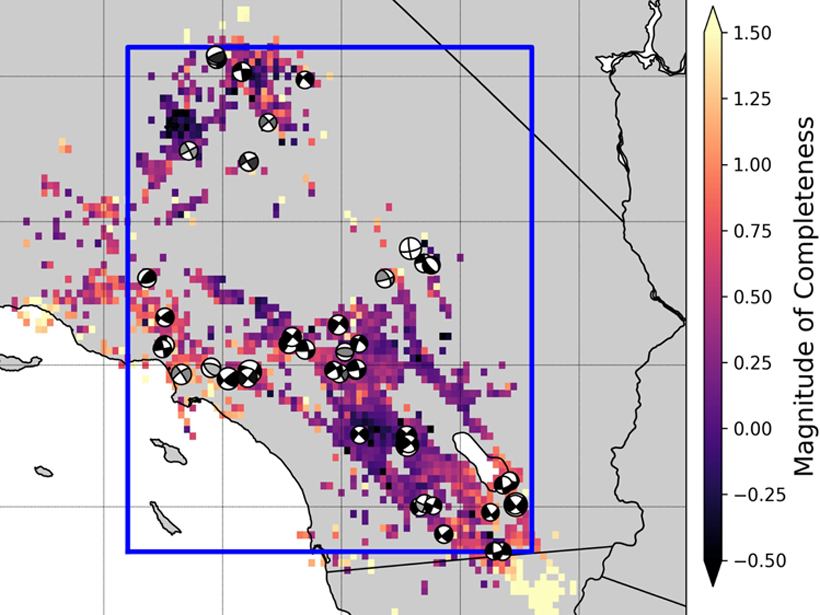Source: Geophysical Research Letters
Foreshocks are the best-known precursor for earthquakes but, until now, observations of natural earthquake sequences have shown less than half of large earthquakes are preceded by foreshock activity. Trugman and Ross [2019] use a cutting-edge earthquake catalog (recently published in Science by a team including these authors) to analyze the question of how pervasive foreshock activity is before moderate-to-large earthquakes in Southern California.
They find a much higher rate of mainshocks with foreshocks than previous studies—over 72% of M4+ earthquakes—and show that our ability to identify earthquake foreshocks is tied to the magnitude of completeness of earthquake catalogs and thus the detection capabilities of earthquake networks. In other words, with improved seismic networks and advances in techniques to detect and locate earthquakes, we may find foreshocks are a more ubiquitous feature of earthquake sequences than previously thought.
While more work is needed to understand these observations, these findings likely have significant implications for earthquake hazard mitigation and our ability to forecast large earthquakes.
Citation: Trugman, D. T., & Ross, Z. E. [2019]. Pervasive foreshock activity across southern California. Geophysical Research Letters, 46, 8772– 8781. https://doi.org/10.1029/2019GL083725
—Gavin P. Hayes, Editor, Geophysical Research Letters
Text © 2019. The authors. CC BY-NC-ND 3.0
Except where otherwise noted, images are subject to copyright. Any reuse without express permission from the copyright owner is prohibited.

